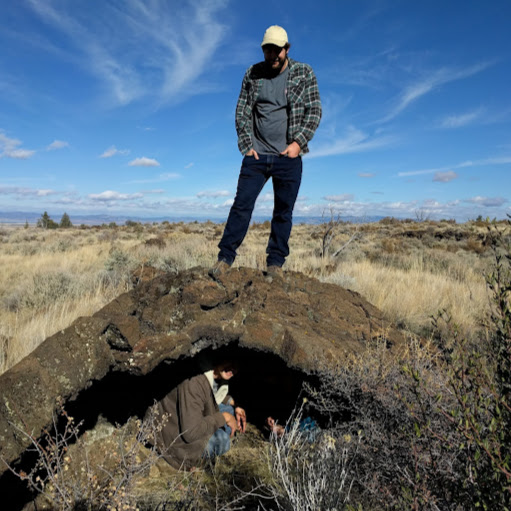David Allan Rupp
age ~47
from Roanoke, VA
- Also known as:
-
- David A Rupp
- David Root
David Rupp Phones & Addresses
- Roanoke, VA
- Zion Crossroads, VA
- 273 Lake Dr, Ruckersville, VA 22968
- Overland Park, KS
- Kansas City, MO
- Tucson, AZ
Work
-
Company:Uva health systemApr 2012
-
Position:Administrative specialist
Education
-
School / High School:St. Mary College / Metropolitan Community College1996
-
Specialities:General Education
Resumes

Administrative Specialist
view sourceLocation:
Gordonsville, VA
Industry:
Hospital & Health Care
Work:
Uva Health System
Administrative Specialist
Administrative Specialist

David Rupp
view source
David Rupp
view source
David Rupp
view source
David Rupp
view source
David Rupp
view source
David Rupp
view source
David Ira Rupp
view sourceLicense Records
David Alan Rupp
License #:
99204 - Expired
Category:
Nursing Support
Issued Date:
May 19, 2011
Effective Date:
Jul 16, 2013
Type:
Nurse Aide
David Alan Rupp
License #:
76475 - Active
Category:
Nursing
Issued Date:
Jul 16, 2013
Effective Date:
Jul 16, 2013
Expiration Date:
Oct 31, 2018
Type:
Registered Nurse
Isbn (Books And Publications)


Western Cyprus: Connections an Archaeological Symposium Held at Brock University, St. Catharines, Ontario, Canada, March 21-22, 1986
view sourceAuthor
David William Rupp
ISBN #
9186098578
Name / Title
Company / Classification
Phones & Addresses
THE CABINET KING, INC
P.G.C. HOLDING COMPANY, LTD
RDD, LTD
GREEN LEAF CABINETRY LLC
PRSH CO., LLC
PALLCON SERVICES COMPANY, LTD
20/20 CUSTOM MOLDED PLASTICS LIMITED PARTNERSHIP
Principal
Accent Circuits
Business Services at Non-Commercial Site
Business Services at Non-Commercial Site
4237 SW Clipper Ln, Lees Summit, MO 64082
Plaxo

David I. Rupp
view sourceAlamogordo, NM

Amanda & David Rupp
view sourceUS Army
Classmates

David Rupp
view sourceSchools:
Redbank Valley High School New Bethlehem PA 1982-1986
Community:
Pamela Keener

David Rupp
view sourceSchools:
Lanark High School Lanark IL 1961-1965
Community:
Rickey White, Steven Schroeder, David Piesen, Leland Simmons

David Rupp
view sourceSchools:
Meridian High School Sanford MI 1972-1976
Community:
Penny Day, John Warner, Kevin Lewandowski

David Rupp
view sourceSchools:
Bendle High School Burton MI 1997-2001
Community:
Margie Benefield, Al Siller

David Rupp
view sourceSchools:
Deer Valley High School Glendale AZ 1985-1989
Community:
Christopher Martin, Christy Oberuc

David Rupp
view sourceSchools:
Lanark High School Lanark IL 1961-1965
Community:
Rickey White, Steven Schroeder, David Piesen, Leland Simmons

David Rupp
view sourceSchools:
Lewistown Granville High School Lewistown PA 1956-1960
Community:
Joan Luscombe, Finda Davis

David Rupp
view sourceSchools:
Holy Trinity High School Hicksville NY 1966-1970
Community:
Regina Molnar, David Caruso, Lyn Swierski, Brenda Levine, Jean Ottoson
Youtube
Myspace
Googleplus

David Rupp
Work:
Semi-retired
Education:
California Western School of Law - JD degree

David Rupp
Education:
Barnwell High School

David Rupp

David Rupp

David Rupp

David Rupp

David Rupp

David Rupp

David Rupp
view source
David Rupp
view source
David Rupp
view source
David Rupp
view source
David Rupp
view source
David Rupp
view source
David Rupp
view source
David Rupp
view sourceFlickr
News

Global Warming Linked to 2011 Weather Extremes
view source- Although La Nias cooler-than-normal waters in the tropical Pacific helped intensify the Texas heat and drought, climate scientist David Rupp of Oregon State University, Corvallis, and his colleagues found that La Nia-related heat waves are now 20 times more likely now than they were 50 years ago
- Date: Jul 11, 2012
- Category: Sci/Tech
- Source: Google

Warming indicted for extreme weather
view source- Since the 1960s, the likelihood of Texas seeing extremely hot, dry weather in a La Nia year has mushroomed 20-fold due to human-induced global warming, David Rupp of Oregon State University in Corvallis and his colleagues calculate.
- Date: Jul 11, 2012
- Category: Sci/Tech
- Source: Google
Get Report for David Allan Rupp from Roanoke, VA, age ~47


















